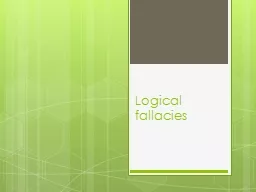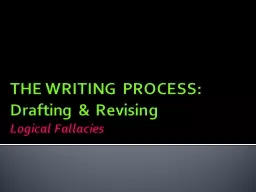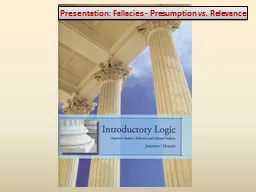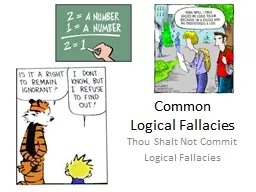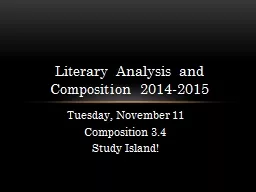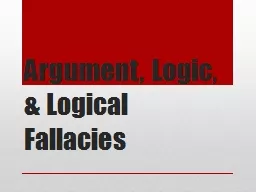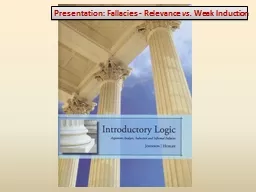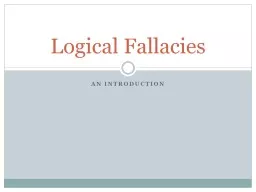PPT-Logical fallacies Logical fallacies
Author : myesha-ticknor | Published Date : 2018-02-18
A fallacy is an error in reasoning A fallacious argument is faulty or incorrect If you are fallible you can make mistakes It is important to recognize the fallacious
Presentation Embed Code
Download Presentation
Download Presentation The PPT/PDF document "Logical fallacies Logical fallacies" is the property of its rightful owner. Permission is granted to download and print the materials on this website for personal, non-commercial use only, and to display it on your personal computer provided you do not modify the materials and that you retain all copyright notices contained in the materials. By downloading content from our website, you accept the terms of this agreement.
Logical fallacies Logical fallacies: Transcript
Download Rules Of Document
"Logical fallacies Logical fallacies"The content belongs to its owner. You may download and print it for personal use, without modification, and keep all copyright notices. By downloading, you agree to these terms.
Related Documents

